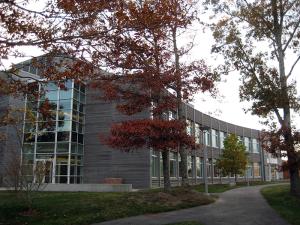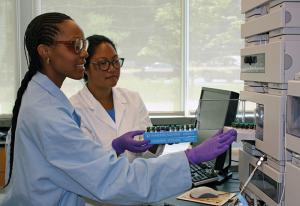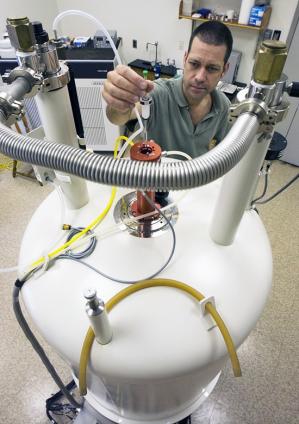Facilities
Our group is housed in the Watson Microbial Biogeochemical Laboratory, a state-of-the-art facility designed to promote interdisciplinary research and located on the WHOI Quissett Campus. We perform a broad range of measurements and experiments as we carry out our projects, from the custom syntheses of labeled organic compounds, to the structural determination of new metabolites and tracers, to the preparation of samples for natural abundance radiocarbon measurements. In order to meet the needs of our work, our lab is fitted with smart hoods, specialty gas and liquid handing systems, and a number of other built-in features that allow us to perform high quality environmental organic analyses. Environmental samples are complex, often containing many thousands of compounds at nano- and picomolar concentrations. To identify and target specific organic compounds that are integral to microbial cycling, we use high pressure liquid chromatography (HPLC) integrated with a number of mass spectrometers (MS), each tuned to a particular application. We use a trace metal clean HPLC-inductively coupled plasma (ICP)-MS to detect dissolved organometallic compounds in seawater. For our work on microbial metabolomics, we use HPLC-MS to screen samples, then the high resolution, orbitrap HPLC-MS to obtain high mass resolution and MSn data. A large portion of our work is discovery based; so little of the ocean has been characterized that many of the compounds we encounter have not been previously reported. To better characterize these key compounds, we use microcapillary NMR equipped with a 10 µL sample cell to acquire high quality 1H and 13C spectra. All Joint Program students and WHOI postdoctoral investigators who work in the lab are trained in the theory and operation of these instruments, and use them in carrying out their research projects.
Instrumentation available through the Repeta Laboratory
- HPLC-orbitrap-MS for metabolic profiling at high mass resolution
- Trace metal free HPLC-ICP-MS for the analysis of organometallic complexes
- 400 MHz nuclear magnetic resonance spectrometer with tunable (1H, 13C, 15N, 31>P) probe
- Microcapillary NMR dual (1H, 13C ) probe for automated, high sensitivity spectroscopy
- HPLC-quadrupole MS for routine organic analysis
- HPLC with UV/Vis, fluorescence, refractive index and charged particle detectors
- Fluoromax-4 spectrofluorometer, spectrophotometer
- Laboratory facilities for ultraclean and radiocarbon free trace organic analysis
- Incubation chambers for phyto- and bacterioplankton laboratory cultures.


